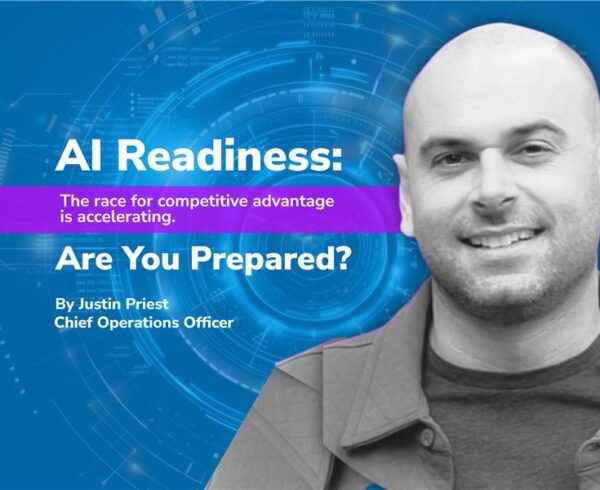It’s Monday morning, and you’re announcing yet another “exciting opportunity for transformation.” A new AI tool rollout. Cloud migration phase three. Another restructuring to “optimize for efficiency.”
Your team’s cameras might be on, but their eyes say what they won’t: they’re exhausted.
This is change fatigue. It shows up when people feel they’re constantly being asked to adapt without enough clarity, support, or breathing room. Left unchecked, it can quickly erode morale and trust, leading employees to disengage or look for stability elsewhere. In high-demand fields like IT, where the pace of transformation is relentless, the effects of fatigue are especially visible, often surfacing as burnout and turnover.
The good news? Change fatigue isn’t inevitable. The cure isn’t to stop changing, it’s building a sustainable approach to leading them.
THE REAL IMPACT OF CHANGE FATIGUE
When teams are stretched too thin, innovation slows, technical debt builds, and top performers begin to look elsewhere. In fact, research from Accenture shows that employees experiencing burnout are 2.5 times more likely to leave their current employer than those who feel supported and engaged.
At the same time, projects themselves are often at risk. McKinsey reports that most organizations capture less than one-third of the value from their digital transformations, and about 70% of new digital initiatives fail to meet long-term performance goals. A big reason why? Teams aren’t fully engaged in the process. When employees don’t feel connected to the change, even the best strategies can fall short.
These aren’t reasons to slow down innovation. They’re reminders that how you lead change matters just as much as what you change.
THREE PILLARS OF EFFECTIVE CHANGE LEADERSHIP
1. DESIGN WITH PEOPLE IN MIND
Successful leaders think beyond the technology itself and focus on the experience of adopting it. Involving end users early and often, through workshops, prototypes, or pilots, creates solutions that feel intuitive and energizing rather than overwhelming.
2. LEAD WITH EMPATHY
Resistance to change is rarely about stubbornness, it’s often about workload, capability gaps, or competing priorities. Leading with empathy means mapping change impacts role by role, listening to skeptics as much as champions, and running pilots that surface hidden challenges before rollout.
3. ALIGN INCENTIVES
Adoption thrives when the new way of working is easier and more rewarding than the old one. That means showing how the change helps people succeed individually, designing workflows that make collaboration seamless, and celebrating the behaviors that move the organization forward.
A FRAMEWORK FOR SUSTAINABLE CHANGE
Lasting change follows a rhythm. The most successful leaders move through four phases that are each designed to build resilience and avoid fatigue that can derail initiatives.
-
- FOUNDATION BUILDING: Assess your team’s capacity for change and identify champions early. This is crucial: Gallup’s research indicates that 73% of employees report experiencing some level of disruptive change in the past year. The more disruption employees face, the more likely they are to feel burned out, thus highlighting how critical it is to support your team through change.
-
- COLLABORATIVE DESIGN: Bringing end users into design conversations makes them co-owners of the solution. Instead of asking for feedback once the build is done, successful leaders co-create experiences that reduce friction and spark adoption.
-
- SUPPORTED IMPLEMENTATION: Rolling out in phases, embedding training into daily workflows, and creating feedback loops ensures employees don’t feel abandoned once “go live” hits.
-
- SUSTAINABLE ADOPTION: Even after implementation, the work continues. Monitoring early warning signs, celebrating quick wins, and refining over time are what turn change into a durable capability rather than a one-off event.
TOOLS THAT MAKE CHANGE STICK
Change management can feel abstract, but a few practical tools make it tangible and repeatable.
Change readiness surveys can highlight where support is needed most. Journey maps outline the employee experience from awareness through adoption. Influence network analysis helps identify the people whose buy-in will carry the most weight. And pairing usage dashboards with short pulse surveys gives a fuller picture of both system adoption and employee sentiment.
Finally, tracking adoption requires more than just system usage data. Pairing dashboards with pulse surveys gives a clearer picture of how people feel about the change, not just whether they’ve logged in. Organizations that actively measure and respond to feedback, see employees are 40% more likely to sustain new behaviors.
FROM FATIGUE TO RESILIENCE
Change fatigue is a challenge, but it’s not the end of the story. With the right approach, leaders can turn constant change into a source of energy and resilience.
By combining design thinking, empathy, and aligned incentives, IT leaders can transform change from something employees endure into something they embrace. And in a fast-moving industry, that resilience becomes one of the most powerful competitive advantages.






